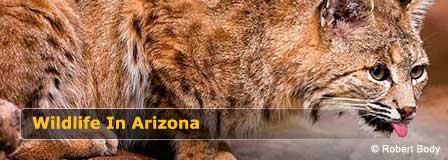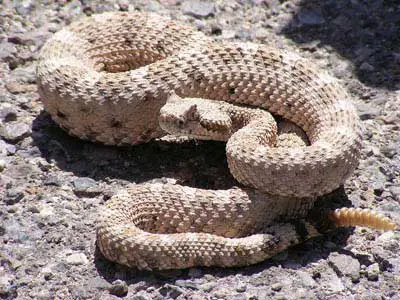Rattlesnake Bites
Are rattlesnakes dangerous? The mere thought of a rattlesnake can shiver the spine, yet alone a close encounter with one. Yes, all rattlesnakes are venomous and their bites pose a medical danger. In some cases the bite can be lethal to small children, the unhealthy and to those with weak immune systems. The type of rattlesnake, the potency of its venom and the amount of venom injected have a bearing on the degree of danger. On average, about 150 people are bitten each year in Arizona by rattlesnakes. Although recorded deaths are rare, the bite can cause severe tissue damage. If you or your pet is bitten by a rattlesnake, seek urgent emergency medical care.
Avoiding A Rattlesnake Bite
Rattlesnakes only exist in North and South America. According to the Arizona Game and Fish Department, there are 36 species of rattlesnakes of which 13 species live in Arizona. Although most rattlesnakes inhabit the desert areas, they do exist in just about every region of Arizona including high elevation forested areas. Some types of rattlesnakes are secretive and live in remote areas far away from people. But some species, like the Western Diamondback hangout in places where humans are active such as golf courses, edges of lakes, along hiking trails and even in suburban backyards.
The best way to avoid being bitten is not getting too close to one. Although a rattlesnake will bite out of defense when suddenly surprised, rattlesnakes have a fear of people and when detected will sliver in the opposite direction. Most bites happen when people harass them. If you come across a rattlesnake, observe its beauty from a distance and let the snake go on its way. From a coiled position, a rattlesnake can strike at a distance of about about half to two-thirds of its body length, so you do not want to get too close.
Don't believe the myth that all rattlesnakes will warn you by rattling. Some will and some won't. A young rattlesnake may not yet have rattles on its tail. Some types are more aggressive than others and will immediately strike when they feel threatened or is surprised. Following are a few tips on avoiding a rattlesnake bite and safety precautions.
- Rattlesnakes are most active in the evening and a night when they do most of their hunting. They are usually very active in the early spring after remaining inactive during the winter months.
- It's best not to hike in wilderness areas after dark. Carry a walking stick and keep it forward to let snakes know you are approaching their area.
- When hiking, wear hiking boots and loose-fitting pants to deflect fangs.
- Never hike alone and have a cell phone.
- Stay on trails. Avoid high grassy areas and dense vegetation that limits visibility.
- Be observant. Do not step on or across logs. Do not blindly place hands between crevices in boulders or stick them inside burrows. Look closely before sitting on boulders or logs.
- If you hear the "rattle", freeze. Look carefully to locate the rattlesnake and move slowly in the opposite direction.
- A dead rattlesnake can still bite through reflex. Do not touch a dead snake. Even a decapitated head of a snake will still bite for a period of time after decapitation.
What To Do If Bitten By A Rattlesnake
Being bitten by any venomous snake requires medical attention, whether its a rattlesnake or a coral snake. Even some non-venomous snakes will bite and many of them look similar to a rattlesnake. So if you are not sure whether you've been bitten by a venomous snake, it's best to be safe and get medical attention anyway. Even though deaths from a snake bite are rare, its bite can cause severe pain with long-lasting tissue damage. Symptoms can occur almost immediately or could take several hours before developing.
- If bitten, try and identify the type of snake. If you heard rattling or notice rattles at the end of the snake's tail, it is likely a rattlesnake.
- Stay calm. Get safely away from the snake. The less movement , the better.
- Have someone call 911. Help will be sent or you will be referred and directed the the nearest emergency care facility that has anti-venom.
- Swelling in and around the bite wound will likely be the first symptom. Immediately remove any jewelry that could become embedded within the swelling.
- If you are alone, keep the affected limb lower than your heart. If someone is with you, lie-down while he or she calls 911.
- Shock could set in. Preserve body heat and keep the affected limb as immobile as possible.
- If possible, wash the wound with soap and water.
- If you are deep into the wilderness and have to walk to a vehicle, sit calmly for about 20 minutes to let the venom localize at the wound area.
- Exertion will stimulate circulation of the venom, so avoid unnecessary movement.
- Get to an emergency room. If you are quite a distance away, call Arizona Poison Control immediately for treatment advice. 1-800-222-1222.
Things Not To Do For A Rattlesnake Bite
- Do not cut the wound open or attempt to suck out the venom with your mouth. A cut will actually expand the diffusion of the toxins. If you have a snake bite kit, the suction cup can be used.
- Do not apply a tight tourniquet.
- Do not apply ice or cold compress to the wound.
Related Rattlesnake Information
- Poison Control Center
1-800-222-1222
Arizona Animals
















